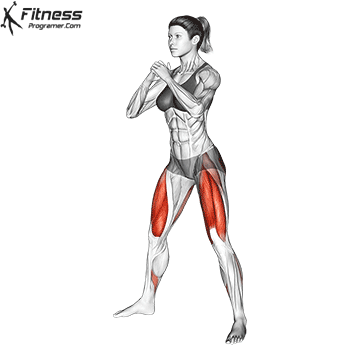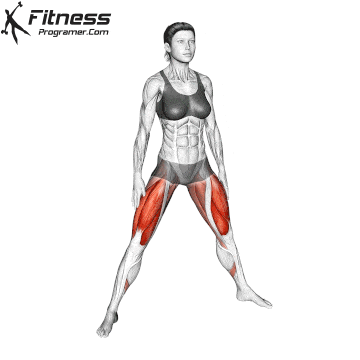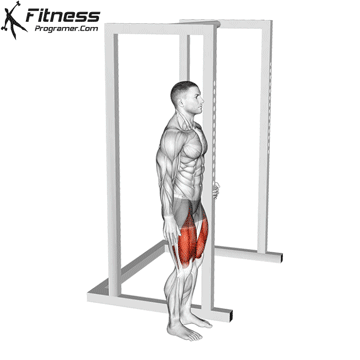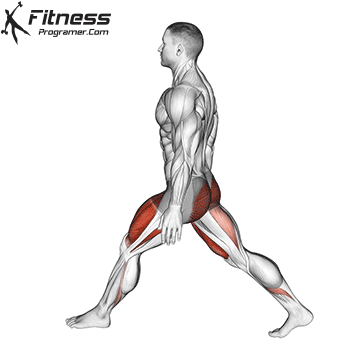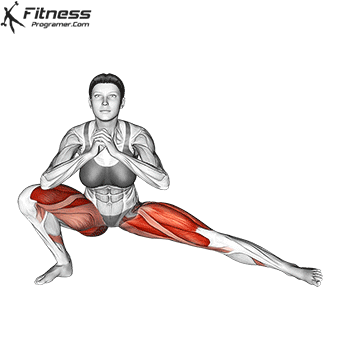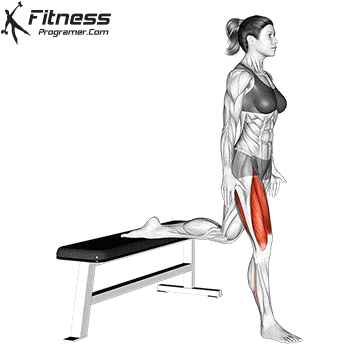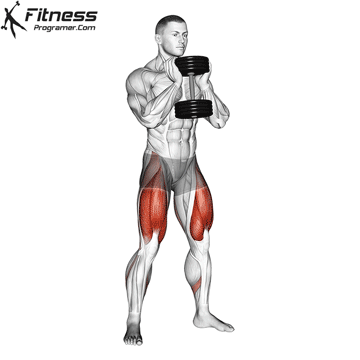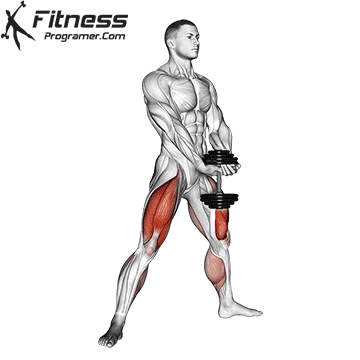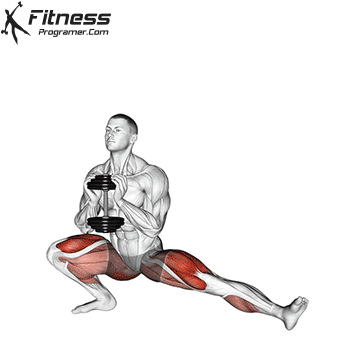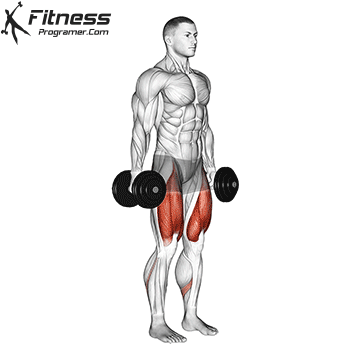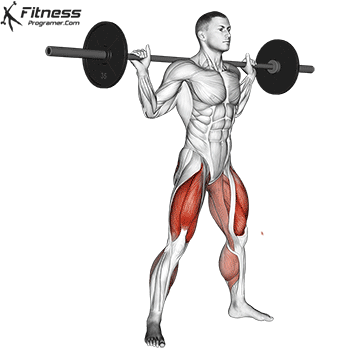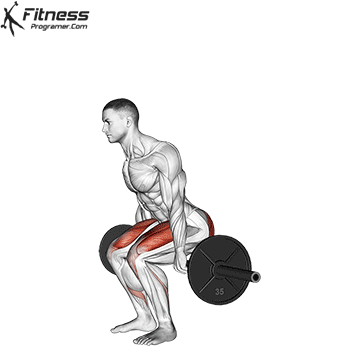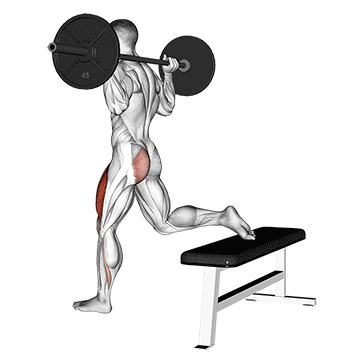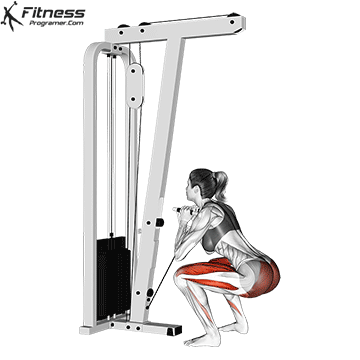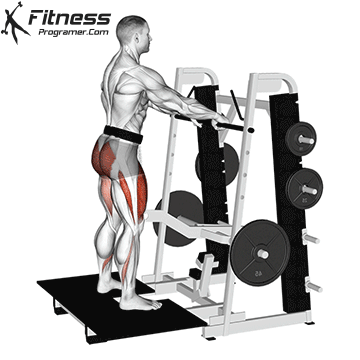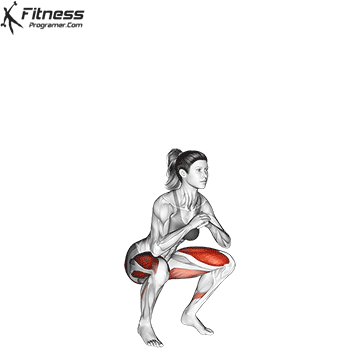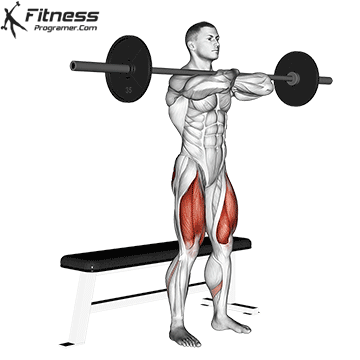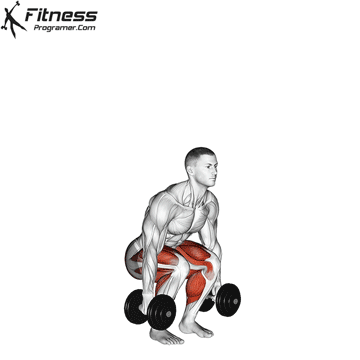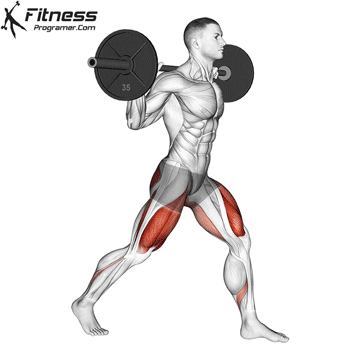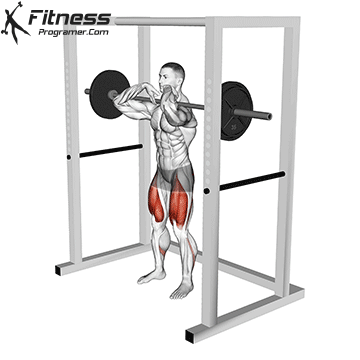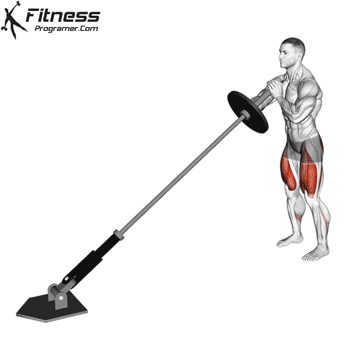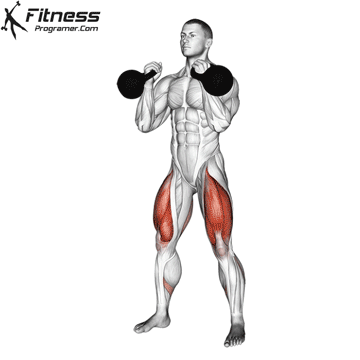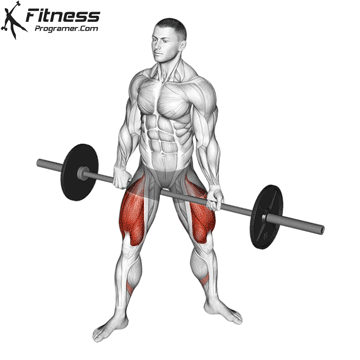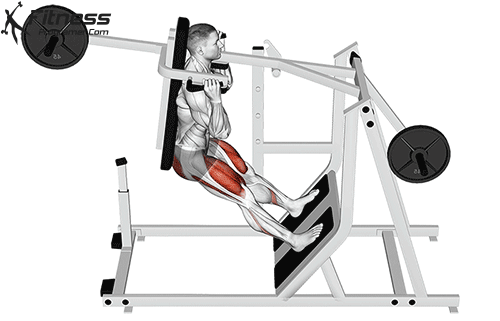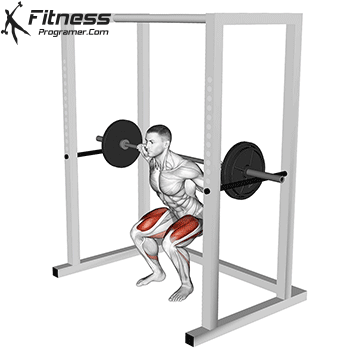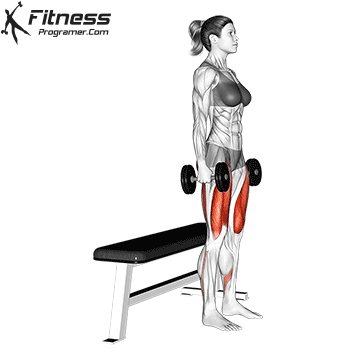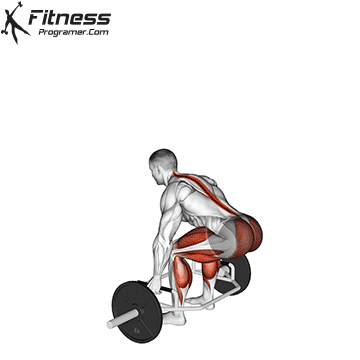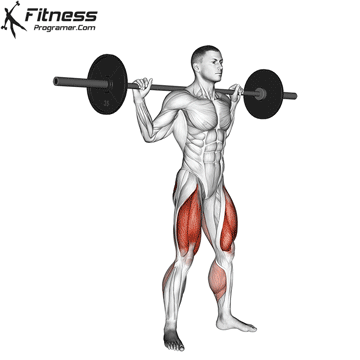Overview
The Dumbbell Sumo Squat is a lower-body strength exercise that emphasizes the inner thighs, glutes, and quads. Performed with a wide stance and a dumbbell held between the legs, it helps improve hip mobility, posture, and lower-body strength while placing less strain on the lower back. It is often used in strength routines, functional training, and all forms of fitness programs.
How to do Perform Dumbbell Sumo Squat
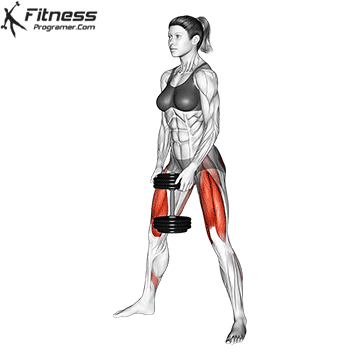
-
Stand with your feet wider than shoulder-width, toes pointed slightly outward.
-
Hold a dumbbell vertically with both hands, letting it hang between your legs.
-
Engage your core and keep your chest upright as you bend your knees and lower your hips.
-
Descend until your thighs are parallel to the ground, keeping your knees in line with your toes.
-
Push through your heels to stand back up, squeezing your glutes at the top.
Tips for Proper Form
-
Keep your chest lifted and back flat throughout the movement.
-
Ensure your knees track over your toes as you squat down.
-
Engage your core to stabilize your spine.
-
Push through your heels, not your toes, to stand up.
-
Control the descent and ascent, avoiding bouncing at the bottom.
Common Mistakes
-
Letting the knees collapse inward, which reduces adductor activation and increases injury risk.
-
Rounding the back, which places unnecessary stress on the spine.
-
Using too much weight too soon, which can compromise form and reduce effectiveness.
-
Not going low enough, which limits muscle activation.
-
Leaning too far forward, which reduces focus on the target muscles.
Benefits of the Dumbbell Sumo Squat
-
Targets Inner Thighs and Glutes: The wide stance places more emphasis on the adductors and glute muscles than standard squats.
-
Improves Hip Mobility: The deep, wide squat position enhances flexibility in the hips and groin area.
-
Strengthens the Posterior Chain: This squat variation activates the hamstrings and glutes for improved athletic performance.
-
Builds Core Stability: Holding the dumbbell and maintaining an upright posture engages the abdominal muscles.
-
Reduces Spinal Load: Holding the weight in front of your body minimizes pressure on the lower back compared to back-loaded squats.
-
Supports Better Knee Alignment: The foot positioning helps promote proper knee tracking and reduces joint stress.
-
Great for All Fitness Levels: The movement is easy to scale with different dumbbell weights, making it suitable for beginners to advanced lifters.
How to Incorporate Into Your Routine
- For Beginners: Perform 2 to 3 sets of 8 to 10 reps using a light dumbbell and focusing on depth and control.
- For Hypertrophy: Aim for 3 to 4 sets of 10 to 12 reps, gradually increasing dumbbell weight over time.
- For Strength: Try 4 sets of 6 to 8 reps with a heavier dumbbell, keeping form tight and movement slow.
- For Functional Training: Include 2 to 3 sets in warm-ups or leg-focused sessions to build lateral and posterior strength.
- For Circuit Training: Perform 10 to 12 reps as part of a lower-body or full-body circuit for metabolic conditioning.
- For General Fitness: Use 2 to 3 sets of 10 reps to improve overall lower body strength and endurance.
- For Mobility or Recovery: Use light weight or bodyweight for slow, deep reps to enhance hip and groin flexibility.
Dumbbell Sumo Squat Muscles Worked
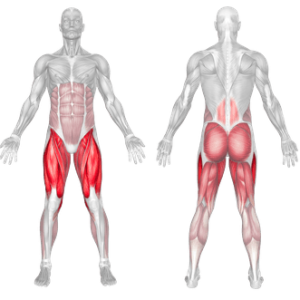
Frequently Asked Questions
Is the Dumbbell Sumo Squat beginner-friendly?
Yes. It offers a stable stance and can be done with bodyweight or light dumbbells to learn the movement.
How is it different from a regular dumbbell squat?
The wider stance in the sumo version increases adductor engagement and glute activation.
What kind of dumbbell should I use?
Any type works, but a hex or kettlebell-style dumbbell is easiest to hold vertically between the legs.
Can this help improve flexibility?
Yes. The deep squat position encourages better mobility in the hips, groin, and ankles.

